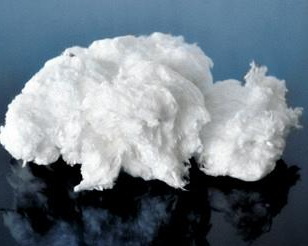STUDY OF HEAT EFFECTS IN TOPOCHEMICAL PROCESSES OF CELLULOSE ESTERIFICATION
UDC 547.458.82:536.6
Abstract
In this research, the heat effects of topochemical esterification of cellulose, namely, nitration and acetylation, were studied. Depending on the conditions, the esterification process can occur in two main topochemical directions such as bulk and local. In bulk process the reagent quickly penetrates in amorphous domains (ADs), and more slowly in crystallites (CRs) of cellulose. In local esterification, the reagent penetrates the most accessible ADs only, whereas CRs remain almost unreacted. It was found that the reaction of bulk nitration of cellulose up to a substitution degree (DS) of 1.5 is endothermic and determined primarily by the contribution of the temperature-entropy component to the negative Gibbs potential. However, if DS > 1.5, the bulk nitration becomes exothermic, and therefore, the feasibility of this process is determined by the impact of enthalpy on the negative Gibbs potential. Unlike nitration, the bulk acetylation of cellulose is always an exothermic process, regardless of the achieved degree of substitution, and this process can be implemented due to the predominant contribution of reaction enthalpy to negative Gibbs potential. In the case of local esterification of ADs, the main contribution to the negative Gibbs potential is made by the reaction enthalpy that determines the reaction feasibility. Besides, the local acetylation is more exothermic than the local nitration process.
Downloads
Metrics
References
Mattar H., Baz Z., Saleh A. et al. Water, Energy, Food and Env. J., 2020, vol. 1, pp. 1–15. https://doi.org/10.18576/wefej/010301.
Cheung C. Studies of the Nitration of Cellulose – Application in New Membrane Material. Diss. Thesis. Vancouver, 2014, 90 p.
Wei D.W., Wei H., Gauthier A.C. et al. J. Biores. Bioprod., 2020, vol. 5, pp. 1–15. https://doi.org/10.1016/j.jobab.2020.03.001.
Edgar K.J., Buchanan C.M., Debenham J.S. et al. Progress in Polym. Sci., 2001, vol. 26, pp. 1605–1688. https://doi.org/10.1016/S0079-6700(01)00027-2.
Filho G.R., Monteiro D.S., Da Silva M.K. et al. Carbohydrate Polym., 2008, vol. 73, pp. 74–82. https://doi.org/10.1016/j.carbpol.2007.11.010.
Fischer S., Thümmler K., Volkert B. et al. Macromolec. Sympos., 2008, vol. 262, pp. 89–96. https://doi.org/10.1002/MASY.200850210.
Sassy J-F., Chanzy H. Cellulose, 1995, vol. 2, pp. 111–127. https://doi.org/10.1007/BF00816384.
Ioelovich M. Polymers, 2021, vol. 13, pp. 1–11. https://doi.org/10.3390/polym13081241.
Gert E.V., Morales A.S., Zubets O.V. et al. Cellulose, 2000, vol. 7, pp. 57–66. https://doi.org/10.1023/A:1009206113613.
Costa M.N., Veigas B., Jacob J.M. et al. Nanotechnology, 2014, vol. 25, pp. 1–12. https://doi.org/10.1088/0957-4484/25/9/094006.
Trache D., Khimeche K., Mezroua A., Benziane M. J. Therm. Anal. Calorim., 2016, vol. 124, pp. 1485–1496. https://doi.org/10.1007/s10973-016-5293-1.
Panchenko O.A., Titova O.I. Khimiya rastitel'nogo syr'ya, 2005, vol. 3, pp. 85–88. (in Russ.).
Obolenskaya A.V., Yel'nitskaya Z.P., Leonovich A.A. Laboratornyye raboty po khimii drevesiny i tsellyulozy: ucheb. posobiye dlya vuzov. [Laboratory work on the chemistry of wood and cellulose: a textbook for universities]. Moscow, 1991, 320 p. (in Russ.).
Ioelovich M. World J. Adv. Res. Rev., 2023, vol. 19, pp. 225–232. https://doi.org/10.30574/wjarr.2023.19.2.1548.
Ioelovich M. Appl. Sci., 2023, vol. 13, pp. 1–11. https://doi.org/10.3390/app13042387.
Ioelovich M. World J. Adv. Res. Rev., 2023, vol. 18, pp. 1477–1488. https://doi.org/10.30574/wjarr.2023.18.3.1260.
Jessup R.S., Prosen E. Nat. Bur. Stand., 1950, vol. 44, pp. 387–393.
Uryash V.F., Larina V.N., Kokurina N.Y., Novoselova N.V. J. Phys. Chem., 2010, vol. 84, pp. 1023–1029. https://doi.org/10.1134/S0036024410060051.
Ioelovich M., Chemeris M., Chemeris N. Wood Chem., 1988, vol. 4, pp. 15–18.
Larina V.N., Uryash V.F., Kushch D.S. J. Phys. Chem., 2012, vol. 86, pp. 1776–1778. https://doi.org/10.1134/S0036024412120138.
Stovbun S.V., Nikolskiy S.N., Melnikov V.P. et al. J. Phys. Chem., 2016, vol. 10, pp. 245–259. https://doi.org/10.7868/S0207401X16040117.

Copyright (c) 2024 chemistry of plant raw material

This work is licensed under a Creative Commons Attribution 4.0 International License.

This work is licensed under a Creative Commons Attribution 4.0 International License.
The authors, which are published in this journal, agree to the following conditions:
1. Authors retain the copyright to the work and transfer to the journal the right of the first publication along with the work, at the same time licensing it under the terms of the Creative Commons Attribution License, which allows others to distribute this work with the obligatory indication of the authorship of this work and a link to the original publication in this journal .
2. The authors retain the right to enter into separate, additional contractual agreements for the non-exclusive distribution of the version of the work published by this journal (for example, to place it in the university depository or to publish it in a book), with reference to the original publication in this journal.
3. Authors are allowed to post their work on the Internet (for example, in a university repository or on their personal website) before and during the review process of this journal, as this may lead to a productive discussion, as well as more links to this published work.















